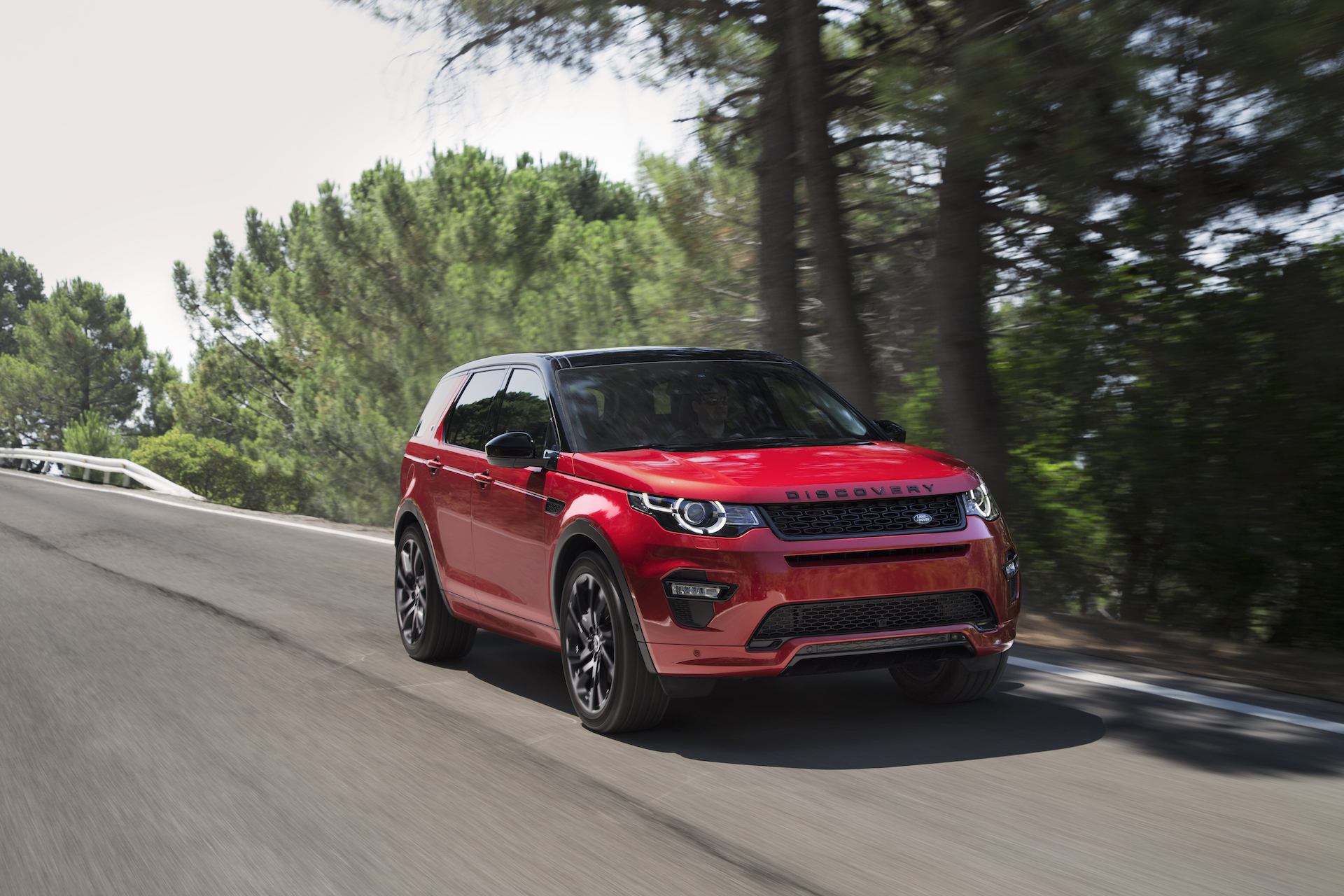
Last year, Land Rover fitted a new engine to the Discovery Sport and tuned it to standard and high-output trim. It’s very close in output to the prior engines, and coupled to a well-tuned 9-speed automatic.
The Disco Sport also gets more than its necessary share of off-road skills, compared to most of its rivals. We give it a point for each of these, and end up at a 7 for performance. (Read more about how we rate cars.)
The 2.0-liter turbo-4 that powers all Discovery Sport crossovers replaced a Ford-built unit. The Land Rover engine’s almost exactly the same in displacement, and in base 237-horsepower, 251 pound-feet trim, nearly identical in output (the former engine had 240 hp). The engine’s also found in the Evoque—and it’s also offered in a high-output 286-hp trim, where it commands more than $6,000 extra.
We haven’t been able to drive a Disco Sport with this engine, but given its power output and our test drives in other Jaguar Land Rover products with the same engine, we’ll conclude for now that it’s a powertrain in need of a bit more refinement, but it’s one with ample acceleration, reaching 60 mph in about 6.9 seconds, and a top speed of at least 124 mph. High-output models spurt to 60 mph in 6.5 seconds, and top out at 142 mph.
The same holds true for the Disco Sport’s 9-speed automatic. We haven’t sampled this installation, but in the Evoque and other Land Rover products, it shifts more smoothly than some 9-speeds from the same source (due to programming and calibration) and can be switched through drive modes than alter shift patterns for snow, sand, and mud.
With a curb weight of about 4,000 pounds, the Discovery Sport doesn’t feel like a heavyweight. It’s as nimble as a long, tall crossover SUV can be, thanks to aluminum body panels and a powertrain mounted to subframes. The suspension’s composed of front struts and multiple links at the rear, and it’s a good combination that keeps the Discovery Sport well-planted without too coarse a ride. Variable-ratio electric power steering has a sizable on-center spot and dials down on the assist, so it tracks well on interstates, but feedback is off the menu.
Off-road ability
The Discovery Sport’s standard all-wheel drive lets it scramble over most small obstacles and through trails without too much fuss, but the off-roading isn’t of the industrial strength you’ll find in a Discovery or a Range Rover.
The Disco Sport has 8.3 inches of ground clearance, and approach and departure angles of 25 and 31 degrees respectively; a Subaru Outback isn’t far off those numbers, but the Disco Sport will wade through nearly two feet of water. It’s more than moderately capable, certainly more than any driver will challenge on the maintained path up to a weekend cabin.
For other situations, the Discovery Sport’s traction-management system changes differential lockup, steering weight, throttle and transmission tuning to accommodate mechanical needs for different traction circumstances—snow needs low-speed takeoffs, sand needs high-speed wheelspin at times. The Discovery Sport can handle all those with its Terrain Response program; it’s easy to drive, thanks to its clever engineering, even though it lacks a low-range transfer case.
Review continues below
0 Kommentarer